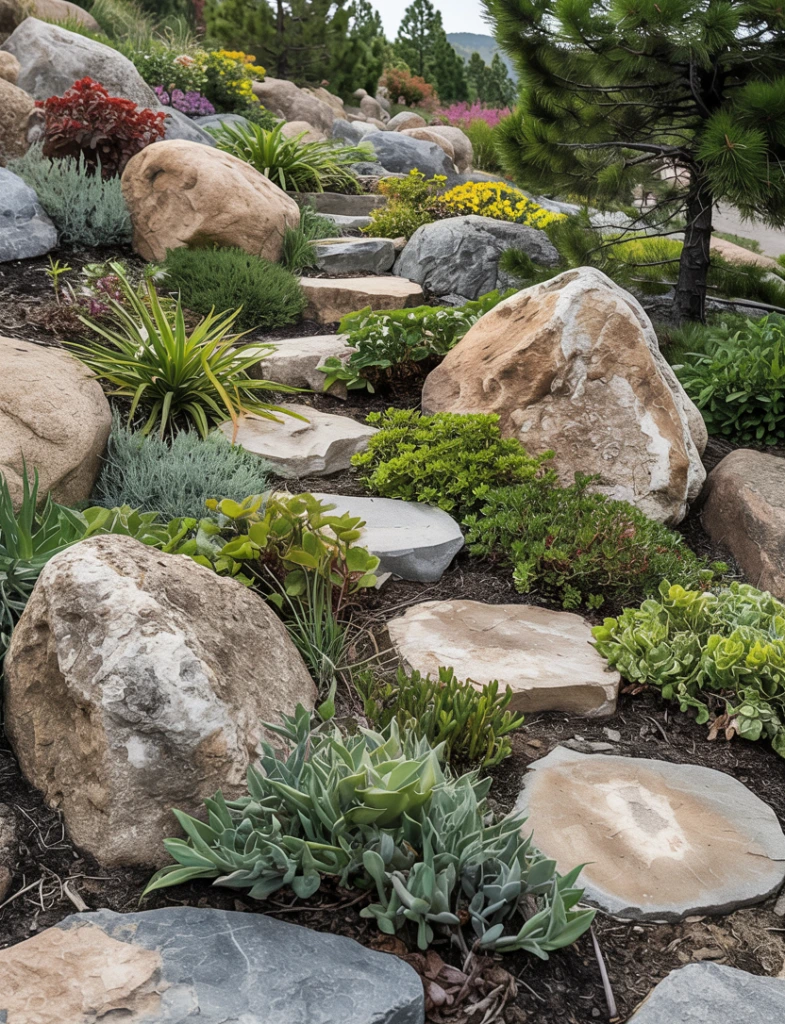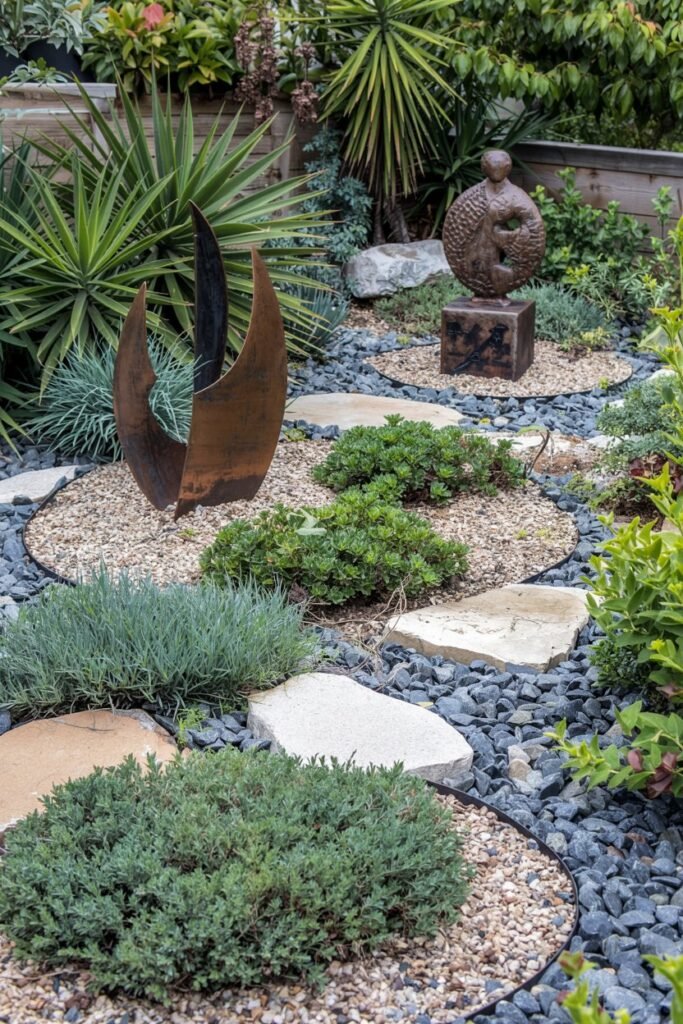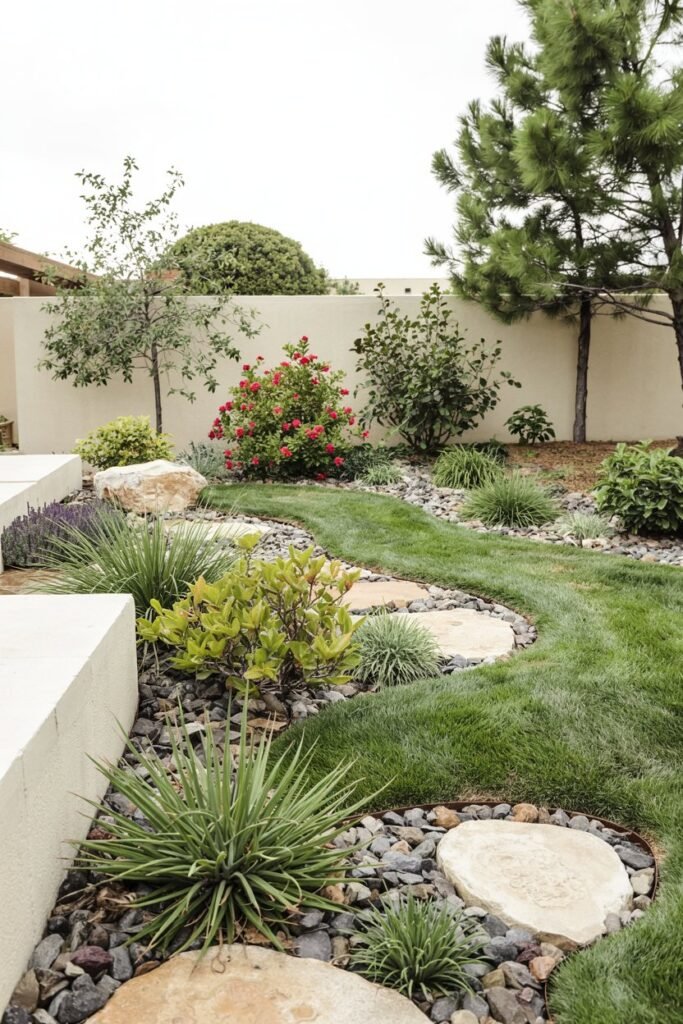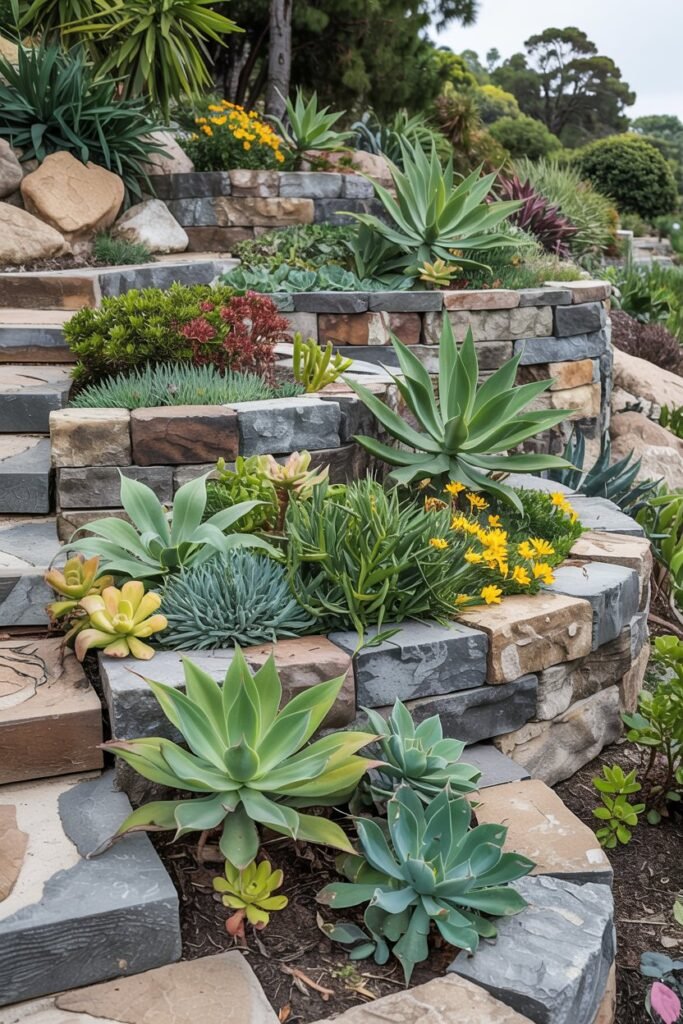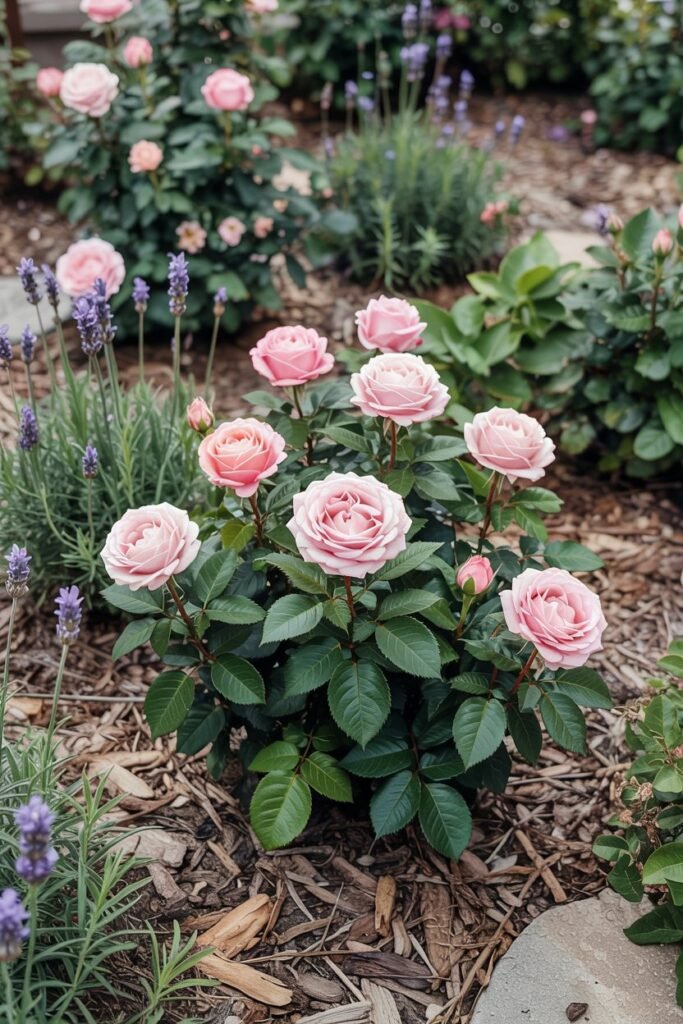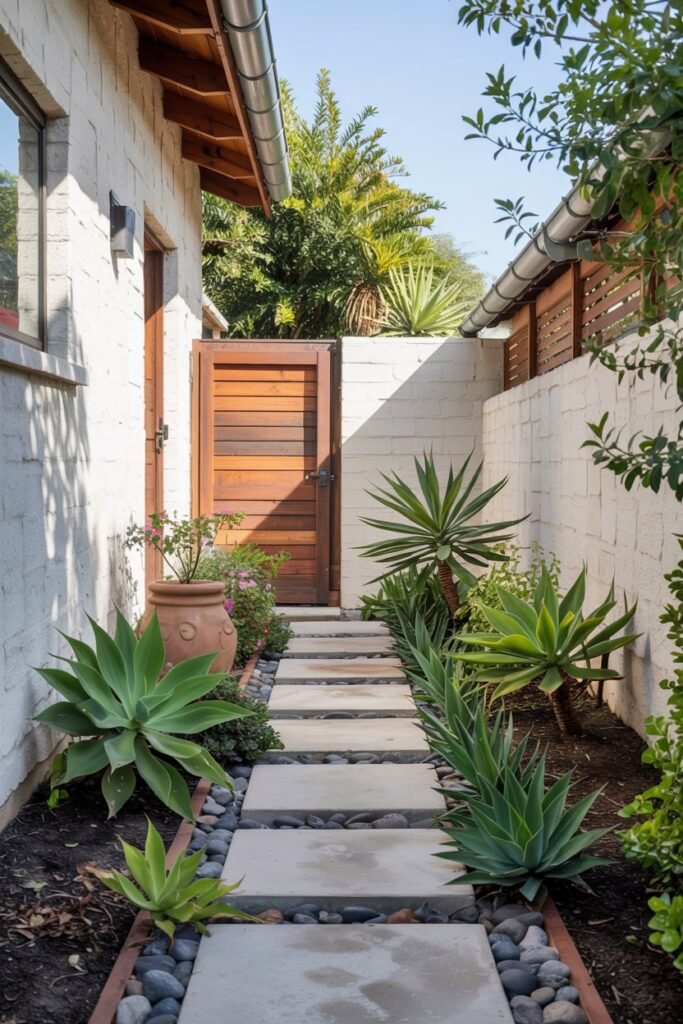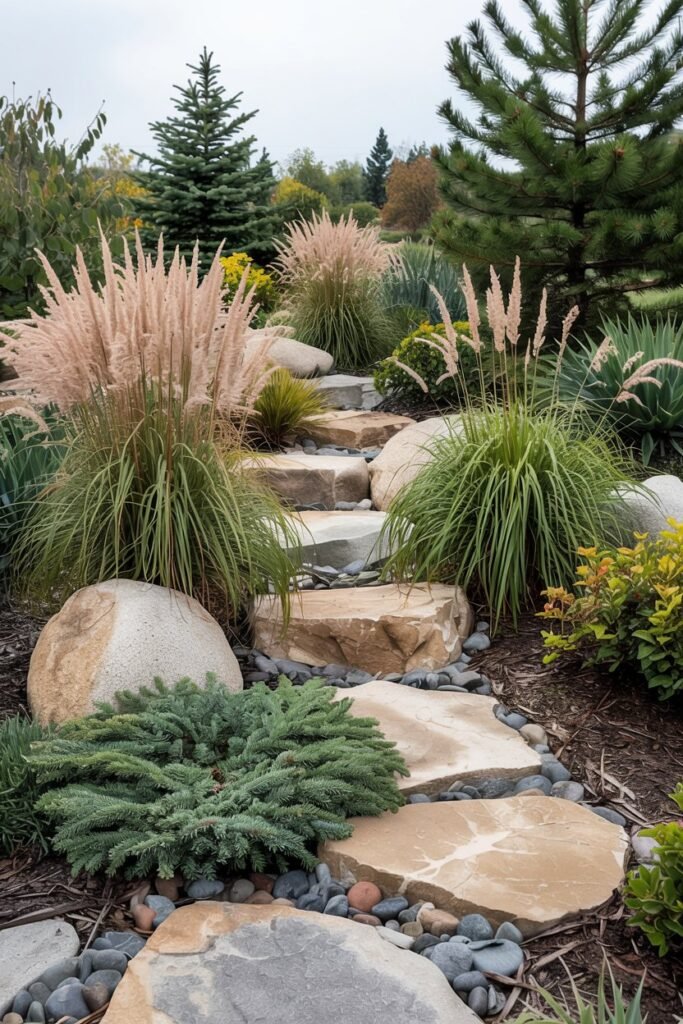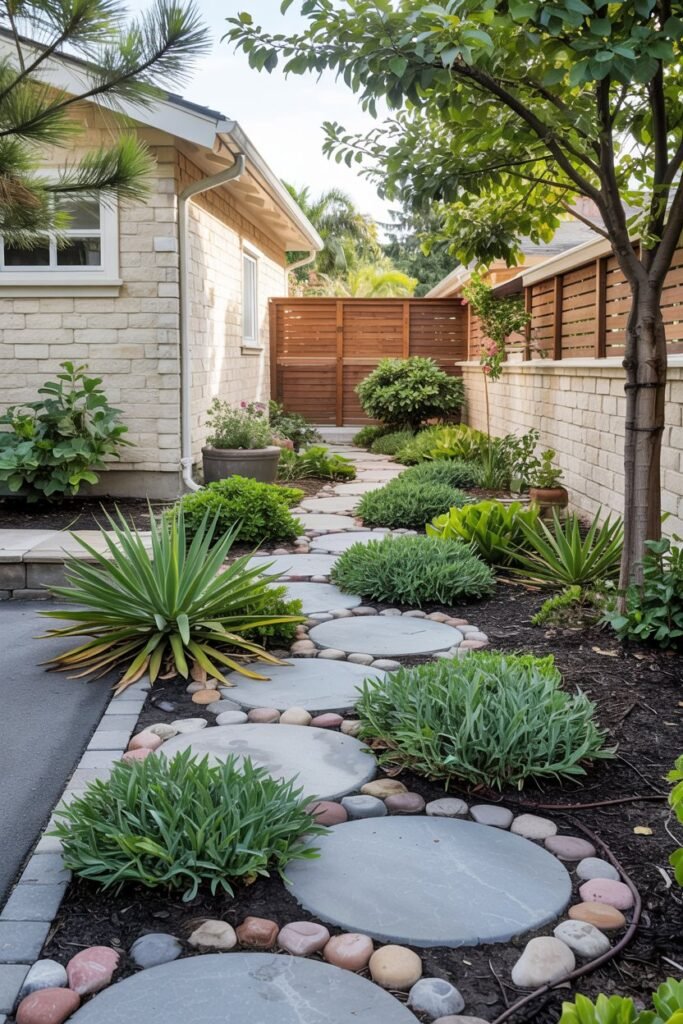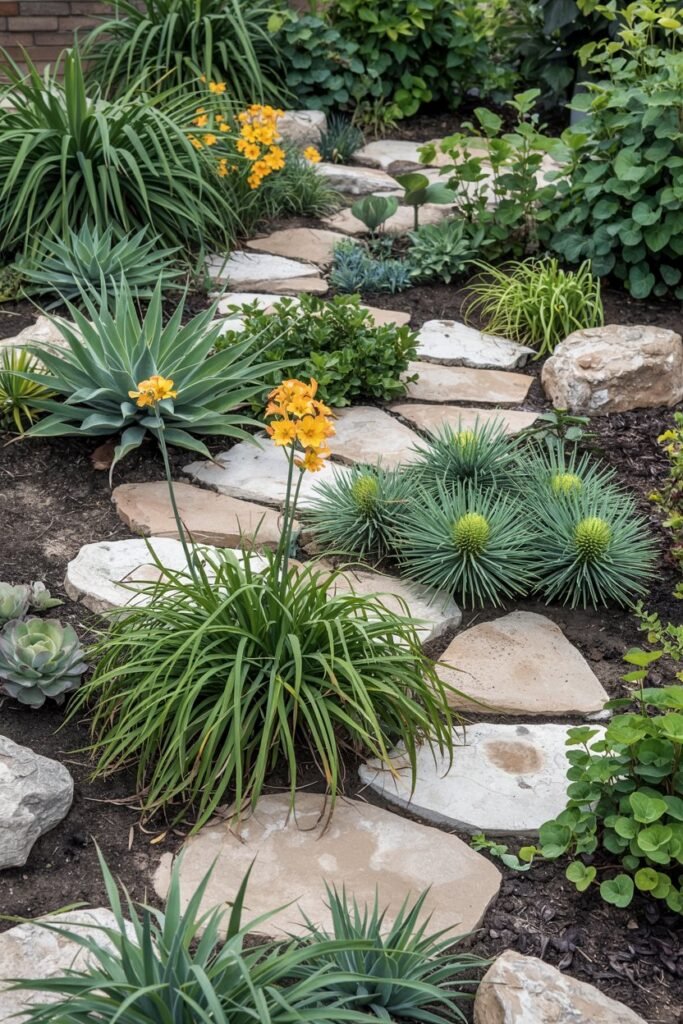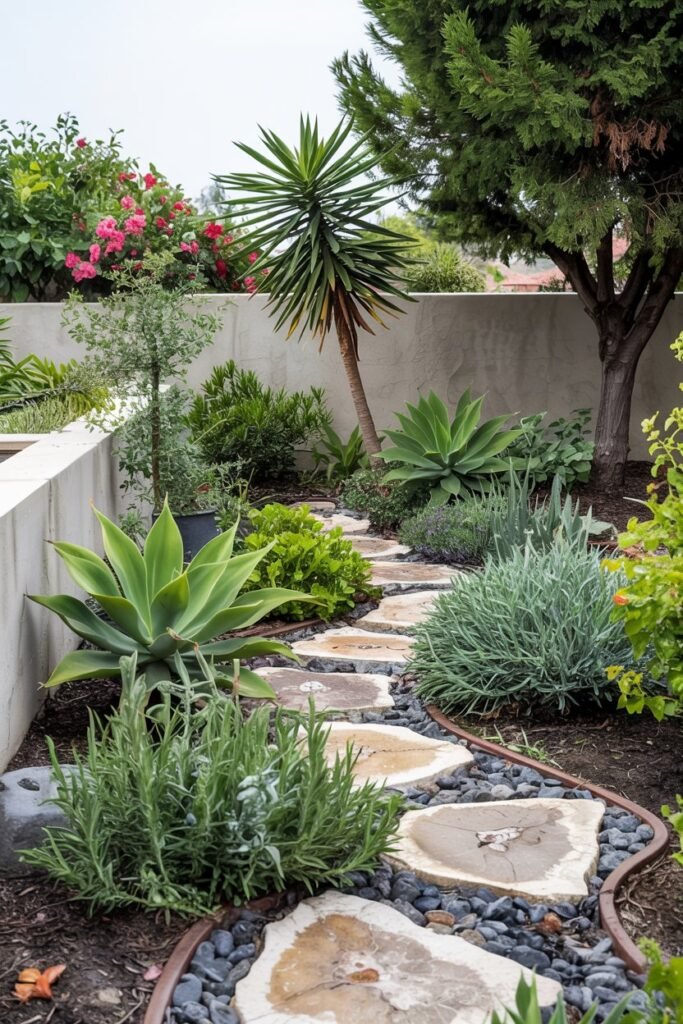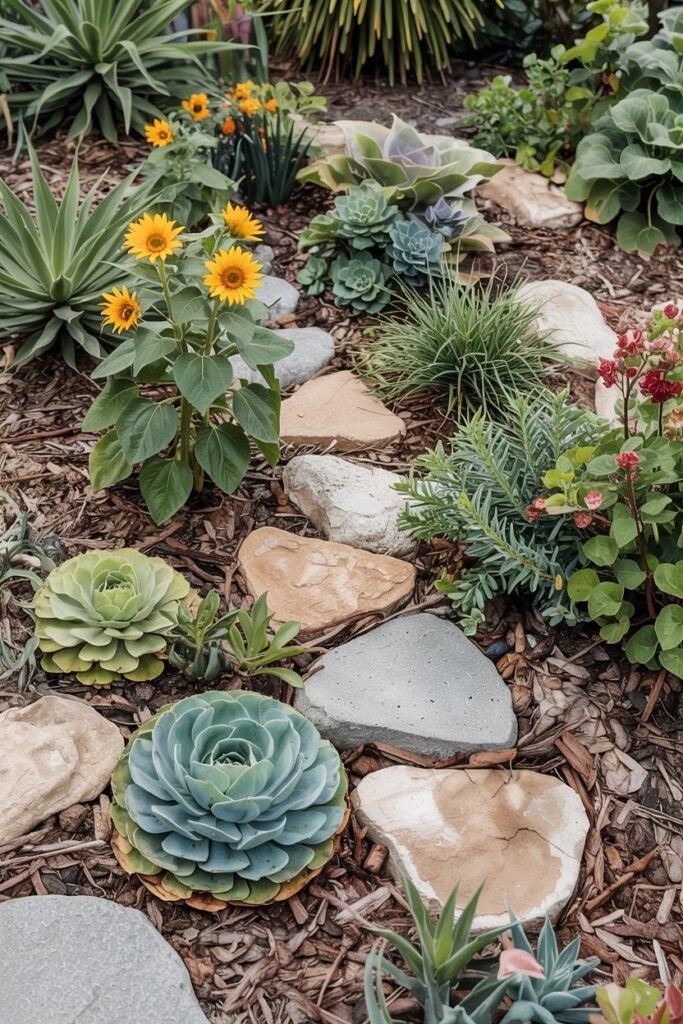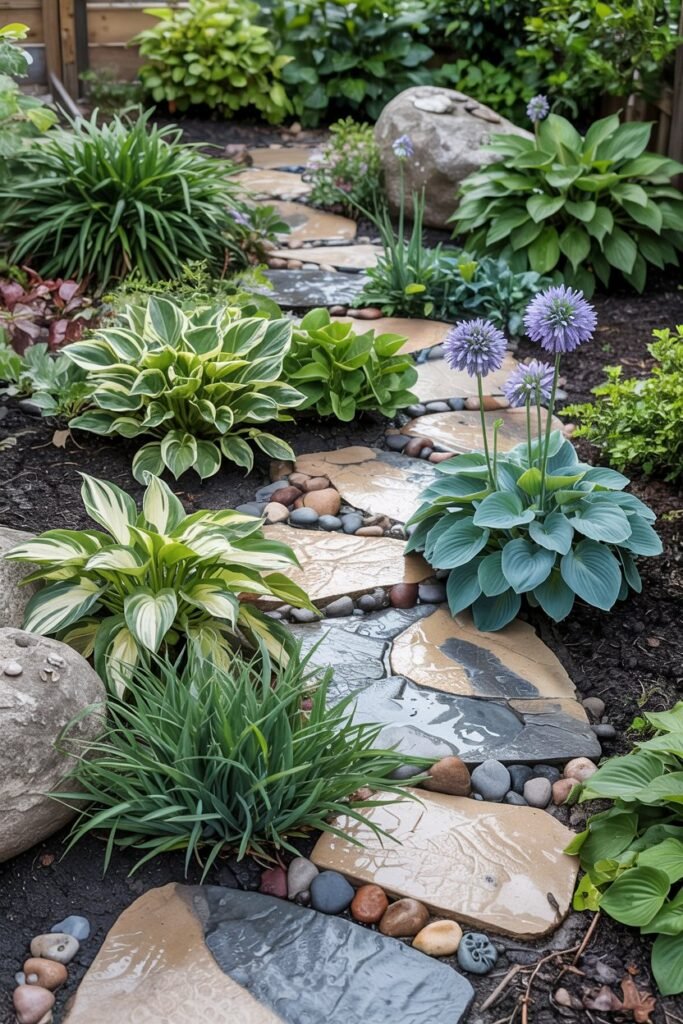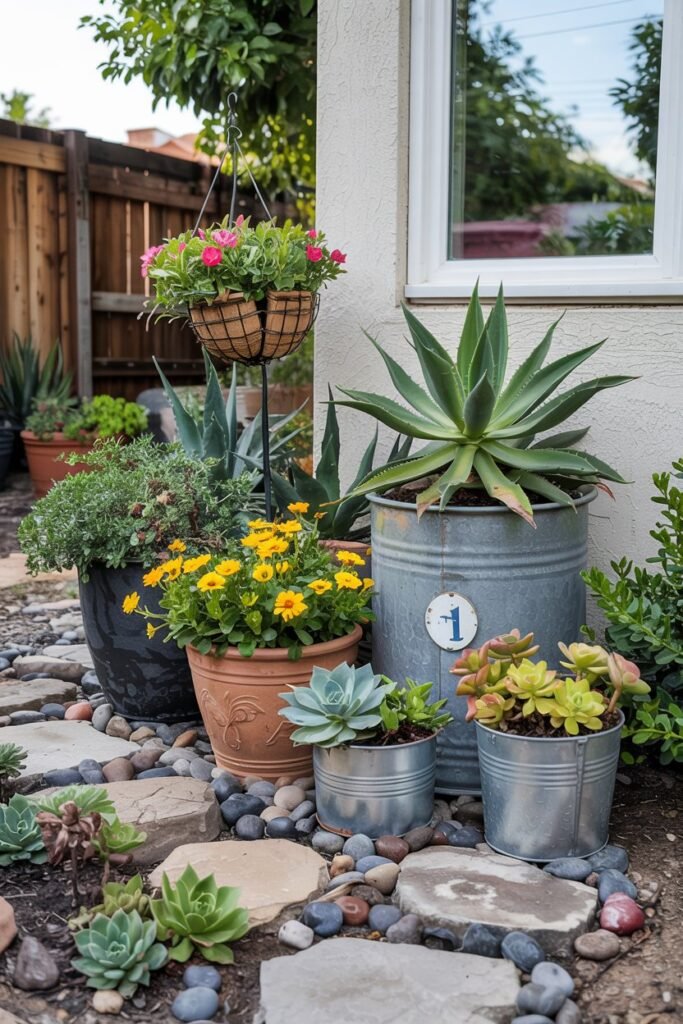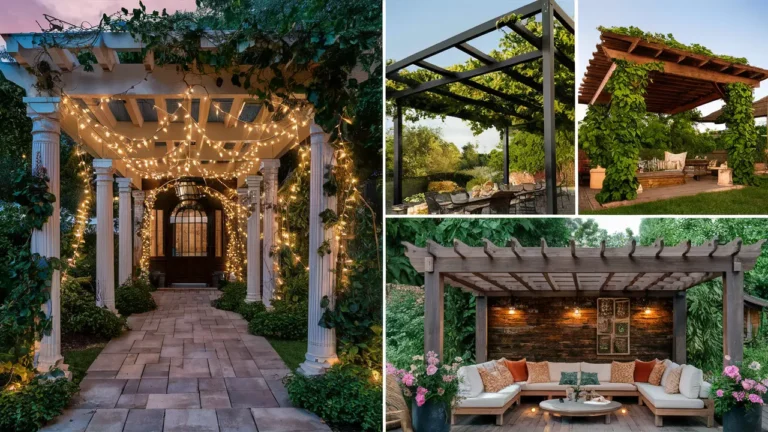20 Drought Tolerant Garden Ideas That Save Water and Look Amazing
I’ll be honest—I used to think drought-tolerant gardens meant boring brown landscapes with nothing but rocks and cactus. Boy, I was wrong.
After years of experimenting with water-wise gardening, I’ve discovered that some of the most stunning gardens require minimal water. These designs not only survive dry spells but actually thrive in challenging conditions while reducing your water bill and maintenance time.
Whether you’re dealing with water restrictions, live in an arid climate, or simply want a gorgeous low-maintenance garden, these 20 drought-tolerant ideas will transform your outdoor space into something extraordinary.
1. Colorful Mediterranean Corner Garden
I love starting with this Mediterranean-inspired design because it proves drought-tolerant doesn’t mean boring. I combine lavender, rosemary, and sage with bright perennial Russian sage and annual zinnias for incredible color.
The secret is using gravel as mulch around these plantings. It retains moisture while allowing excellent drainage that Mediterranean plants crave. I add stepping stones to create pathways and a small birdbath as a focal point.
This design works beautifully in corners and gives you herbs for cooking while attracting beneficial pollinators.
2. Replace Thirsty Turf with Stone Patios
I’ve helped many homeowners ditch their water-hungry lawns for gorgeous stone patios surrounded by drought-tolerant plantings. Replace sections of grass with flagstone or pavers, then border with shrub roses, climbing roses, and Mexican bush sage.
The hardscape provides entertainment space while dramatically reducing water needs. I particularly love pink alstroemeria mixed with the roses—it blooms repeatedly and handles heat like a champion.
This approach cuts your water usage while creating usable outdoor living space.
3. Xeriscaping with Gravel and Succulents
I’m fascinated by xeriscaping because it mimics natural desert beauty. I use water-permeable gravel surfaces with stepping stones, then plant various cacti, agave, and Mediterranean natives throughout.
The key is creating different heights and textures. I place larger barrel cacti as anchors, fill in with smaller succulents, and add ornamental grasses for movement. The gravel acts as both mulch and design element.
This style requires almost no water once established and looks stunning year-round.
4. Alpine Rock Garden with Boulders
I discovered that using large boulders creates instant drama while providing microclimates for plants. I position several large stones strategically, then tuck low-growing alpine plants and ground covers around them.
The rocks provide afternoon shade for more delicate plants while storing heat for cool mornings. I plant creeping thyme, sedum varieties, and small ornamental grasses in the spaces between stones.
This design works particularly well on slopes where traditional gardens struggle.
5. Sculptural Garden with Artistic Elements
I love adding sculptures to drought-tolerant gardens because they provide year-round interest without requiring water. I use contemporary metal pieces or natural stone sculptures as focal points, surrounded by gravel and drought-tolerant ground covers.
Creeping thyme works beautifully around sculptures—it softens the hardscape while slowing water runoff during rare rain events. I also add different colored gravels to create patterns and visual interest.
The combination of art and plants creates a sophisticated, gallery-like outdoor space.
6. Reduced Lawn with Native Plantings
Instead of eliminating grass entirely, I often recommend reducing it strategically. I replace sections of turf with seasonal flowering shrubs, ornamental grasses, and native stone features.
Rock mulch around the plantings conserves moisture while creating clean lines. I particularly love this approach because it maintains some green space for activities while dramatically reducing water needs and maintenance.
Choose native plants that naturally thrive in your climate for best results.
7. Rain Garden for Water Collection
I’m passionate about rain gardens because they solve drainage problems while creating beauty. I create shallow depressions that capture rainfall and direct it toward drought-tolerant plantings.
The key is using plants that can handle both wet and dry conditions. I plant blanket flower, red hot poker plants, and native grasses that drink up water when it’s available but survive long dry spells.
This design actually improves your landscape’s water efficiency while preventing erosion.
8. Terraced Hillside Garden
For sloped areas, I create terraces using retaining walls and fill them with drought-tolerant plants. I use variegated agave as anchor plants, then fill in with low-growing portulaca, ice plant, and various sedum varieties.
The terraces prevent water runoff and erosion while creating distinct planting zones. Each level can have slightly different plants based on sun exposure and drainage patterns.
This approach turns challenging slopes into stunning focal points.
9. Ground Cover Rose Garden
I love proving that you can keep roses in drought-tolerant gardens. I plant ground cover roses like ‘Flower Carpet Rose’ combined with lavender for a romantic, fragrant combination.
These newer rose varieties are incredibly drought-tolerant once established. The lavender provides structure and attracts beneficial insects while requiring minimal water.
I mulch heavily around both plants to conserve moisture and suppress weeds.
10. Dense Prairie Planting Style
I’ve learned that planting densely actually conserves water by shading the soil and reducing evaporation. I create meadow-like plantings with native prairie plants like ‘Blonde Ambition’ grass and Tennessee purple coneflower.
The plants support each other by creating their own microclimate. I add sage, agastache, and California poppies for incredible color and texture variety.
This style looks natural and wild while being surprisingly water-efficient.
11. Side Yard Transformation
I never overlook narrow side yards—they’re perfect for drought-tolerant makeovers. I use concrete slabs or pavers for walking surfaces, then edge with dwarf mondo grass, agave, and New Zealand flax.
These architectural plants create modern, sculptural interest in tight spaces. I add society garlic for seasonal flowers and dracaena for height and drama.
This approach turns forgotten spaces into stunning garden features.
12. Simple Boulder and Grass Design
Sometimes I keep things beautifully simple with just a few large boulders, evergreen spruce, and ornamental grasses. Pink muhly grass is particularly stunning when it blooms in fall.
The key is choosing the right proportions and positioning. I place boulders asymmetrically and let grasses soften the edges naturally. This minimalist approach requires virtually no water or maintenance.
It proves that less can definitely be more in garden design.
13. Low Ground-Hugging Garden
For areas that need to stay low, I use paver slabs with gravel, blue fescue ornamental grass, and blue chalk sticks. Ground-hugging thyme fills spaces between pavers beautifully.
This design stays under two feet tall while providing incredible texture and color variation. The blue-toned plants create a cooling effect that’s particularly striking in hot climates.
I love how this style flows like water while requiring almost none.
14. Driveway Planting Strips
I’ve discovered that adding drought-tolerant planting strips along driveways captures surface runoff while adding beauty. I use porous pavers interspersed with drought-tolerant turf or groundcovers.
This approach manages water naturally while softening hard surfaces. The plants help cool the area and provide habitat for beneficial insects.
It’s a simple change that makes a significant environmental impact.
15. Zoned Watering Garden
I always group plants with similar water needs together for maximum efficiency. I create zones with plants like ‘Serendipity’ ornamental onion, ‘Lemon Squeeze’ Prairie Winds fountain grass, and drought-tolerant daylilies.
This zoning allows me to water efficiently and avoid overwatering drought-tolerant plants or underwatering those that need more moisture. Each zone can have its own irrigation schedule and method.
Smart planning from the start saves water and ensures plant health.
16. Edible Drought-Tolerant Garden
I love combining edible plants with ornamental drought-tolerant varieties. I plant Mediterranean herbs like rosemary and thyme alongside lavender, agave, and kangaroo paw for an incredibly functional garden.
Many edible plants are naturally drought-tolerant—olives, pomegranates, and figs all thrive with minimal water. I add New Zealand flax for architectural interest and to create microclimates.
This approach gives you fresh herbs and produce while maintaining water-wise principles.
17. Natural Boulder Water Feature
I create stunning focal points by combining natural boulders with small water features and drought-tolerant plantings. I use native grasses, pincushion flower, and various aloe varieties around a stone fountain.
The water feature doesn’t need to be large—even small fountains provide the soothing sound of water while attracting birds. River rock around the feature ties everything together naturally.
The contrast between water and drought-tolerant plants creates unexpected beauty.
18. Mulched Perennial Garden
I never underestimate the power of good mulch in drought-tolerant gardens. I use both organic shredded bark and inorganic gravel mulch depending on the plants and design style.
Around heat and drought-tolerant perennial sunflowers like ‘Tuscan Sun’, I prefer organic mulch that breaks down and improves soil. For succulents and Mediterranean plants, gravel mulch provides better drainage.
Proper mulching can reduce water needs by up to 50% while suppressing weeds.
19. Shade Rain Garden
Not all drought-tolerant gardens need full sun. I create rain gardens in shaded areas using plants with variegated foliage that can handle both wet and dry conditions.
These gardens manage stormwater runoff while thriving on natural rainfall. I use hostas, heuchera, and other shade perennials that go dormant during dry spells but bounce back with rain.
This proves that water-wise gardening works in any light condition.
20. Container Drought Garden
I love using containers for drought-tolerant plants because they provide perfect drainage and can be moved for optimal growing conditions. I fill containers with succulents and other water-thrifty plants, then add heat-tolerant annuals for seasonal color.
Containers heat up quickly, which many drought-tolerant plants actually prefer. I group containers of different sizes to create interesting vignettes that can be rearranged as needed.
This flexible approach lets you experiment with drought-tolerant plants before committing to permanent plantings.
Conclusion
Your garden can be both beautiful and water-wise—these 20 ideas prove that drought-tolerant doesn’t mean boring or brown. I’ve seen these designs thrive in challenging conditions while creating stunning outdoor spaces that require minimal maintenance.
Start with the style that appeals most to you and your climate. Even small changes toward water-wise gardening make a significant difference in both water conservation and garden success. Which drought-tolerant garden idea will you try first?




